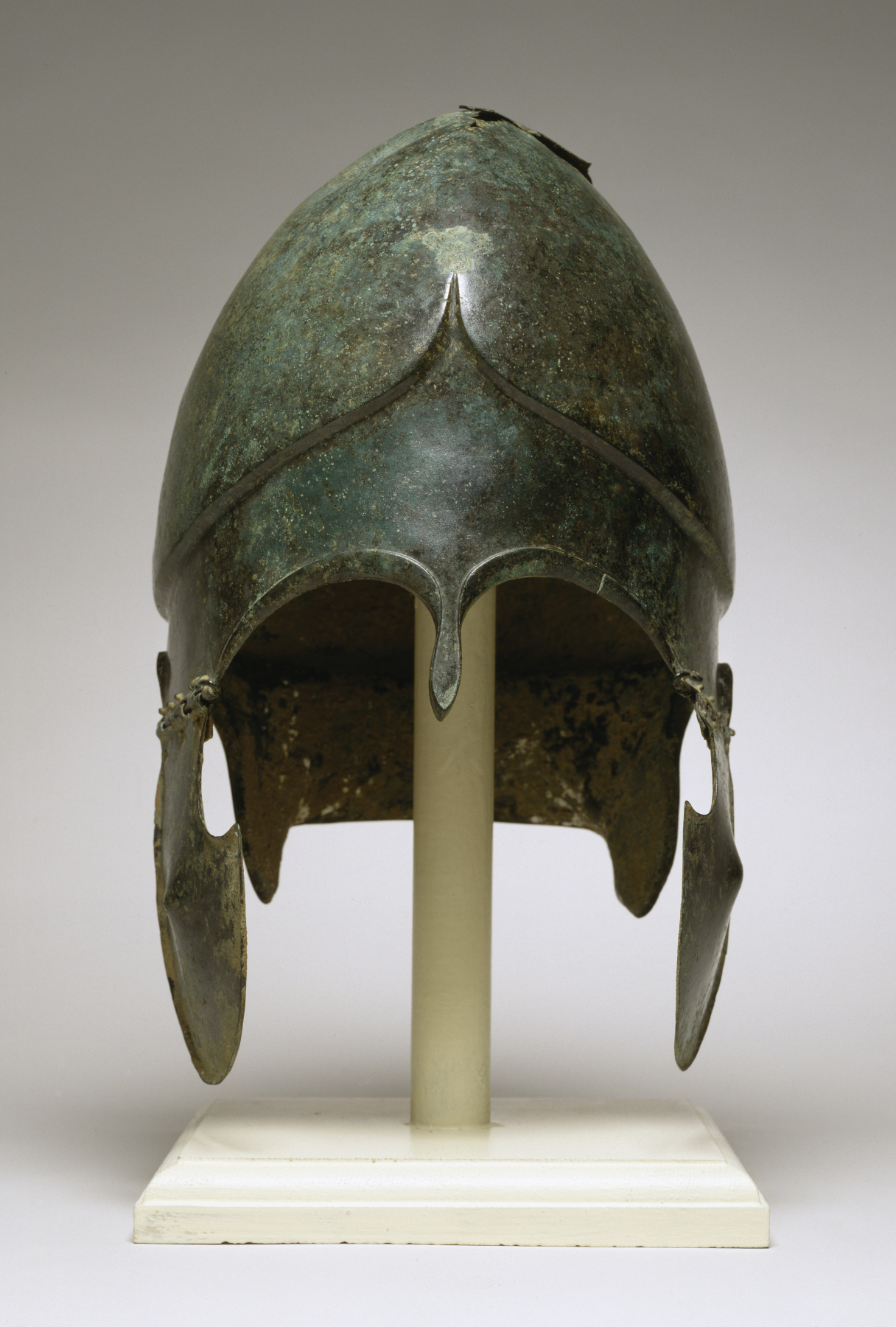Chalcidian helmet on:
[Wikipedia]
[Google]
[Amazon]
 A Chalcidian helmet or Chalcidian type helmet was a helmet made of
A Chalcidian helmet or Chalcidian type helmet was a helmet made of
 The helmet appears to have been a development of the
The helmet appears to have been a development of the 
 A Chalcidian helmet or Chalcidian type helmet was a helmet made of
A Chalcidian helmet or Chalcidian type helmet was a helmet made of bronze
Bronze is an alloy consisting primarily of copper, commonly with about 12–12.5% tin and often with the addition of other metals (including aluminium, manganese, nickel, or zinc) and sometimes non-metals, such as phosphorus, or metalloids such ...
and worn by ancient warriors of the Hellenic world, especially popular in Greece in the fifth and fourth centuries BC. The helmet was also worn extensively in the Greek (southern) parts of Italy in the same period.
Terminology
The helmet is so-called because it was first, and is most commonly, depicted on pottery once thought to derive from the Euboean city ofChalcis
Chalcis ( ; Ancient Greek & Katharevousa: , ) or Chalkida, also spelled Halkida (Modern Greek: , ), is the chief town of the island of Euboea or Evia in Greece, situated on the Euripus Strait at its narrowest point. The name is preserved from ...
. In fact, it is not known whether the helmet originated in Chalcis; indeed, it is not even known whether the pottery in question was Chalcidian.
Description
 The helmet appears to have been a development of the
The helmet appears to have been a development of the Corinthian helmet
The Corinthian helmet originated in ancient Greece and took its name from the city-state of Corinth. It was a helmet made of bronze which in its later styles covered the entire head and neck, with slits for the eyes and mouth. A large curved pro ...
, its improvements in design giving the wearer better hearing and vision, resulting in a lighter and less bulky helmet.
It consisted of a hemispherical dome, and below that, generally inset from the top dome, a pair of cheek pieces and a neck guard, with a substantial loop on either side for the wearer's ears. In the front, between the two cheek pieces, was a small nasal bar to protect the wearer's nose. The helmet could be entirely one piece, or the cheek pieces could be attached separately by hinges, which eased construction and made putting the helmet on easier. In Italy, the helmet with fixed cheek pieces is referred to as Chalcidian, its variant with hinged cheek pieces is called a Lucanian helmet because it was widely used in Lucania.
The helmet would commonly have a hole pierced on each cheek piece or elsewhere in order to accept an inner lining which was made of leather. Adornments such as combs and other protuberances were usually placed on the top of the helmet.

Usage
By the time of Alexander the Great, the helmet was still worn by armoured soldiers, especially hoplites, the spear-armed heavy infantrymen (other than those of the Spartans, who instead wore the much plainer pilos helmet). It is likely that some of the Macedonian soldiers who ruled the rest of Greece and went on to forge a substantial Hellenistic empire also wore the Chalcidian helmet. The helmet is thought to have developed in turn into the Attic helmet, which is iconic of classical soldiers.Sources
*Heckel, Waldemar, and Jones, Ryan. ''Macedonian Warrior: Alexander's Elite Infantryman''. Osprey Publishing, 2006. *Horsnaes, Helle W. ''The Cultural Development in North Western Lucania C. 600-273 BC.'' L'Erma di Bretschneider, 2002. *Sekunda, Nicholas. ''Greek Hoplite, 480-323 BC: 480-323 BC''. Osprey Publishing, 2000. {{helmets Ancient Greek helmets Ancient Euboea Ancient Chalcidice